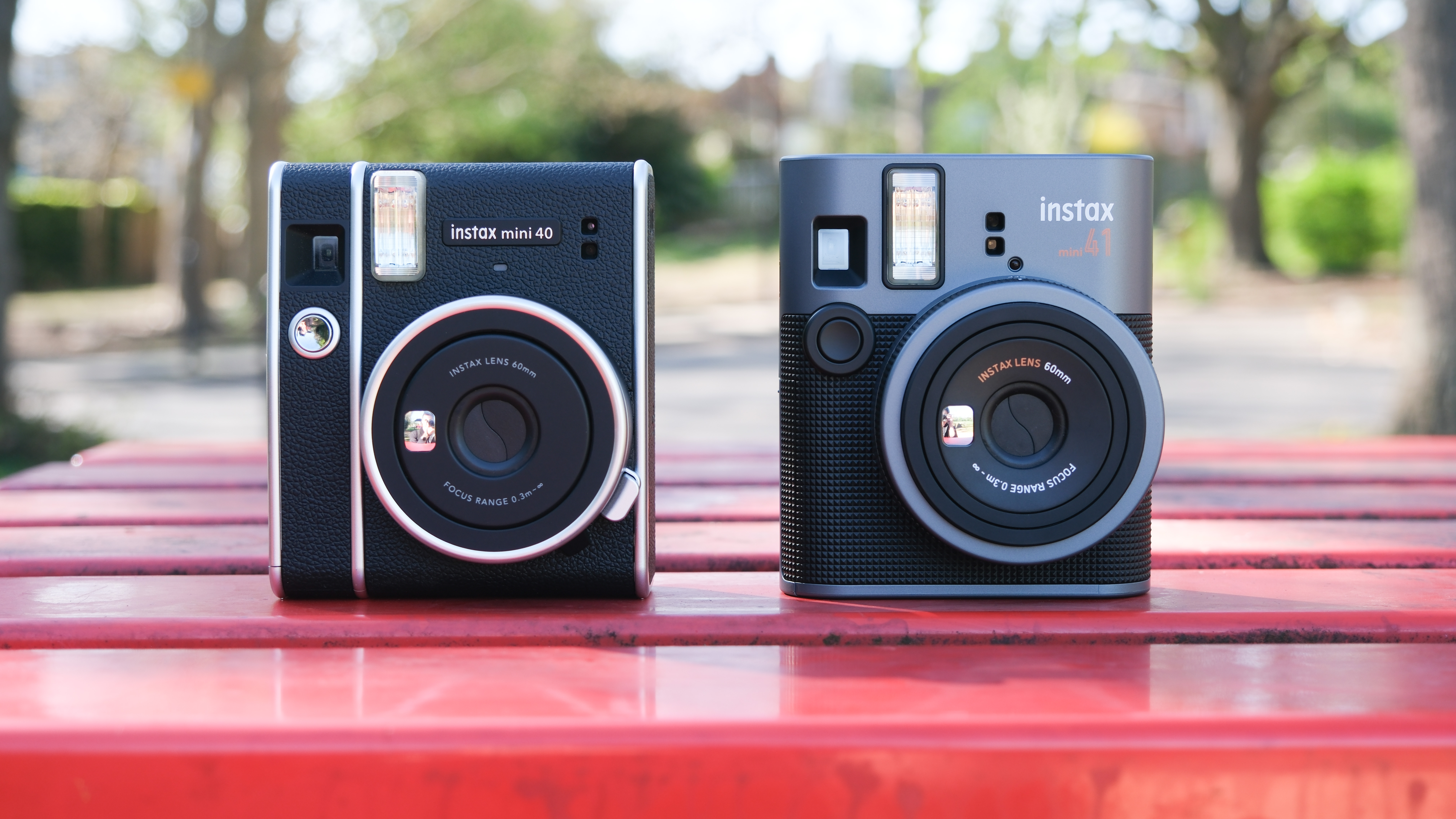Watch video: Master the composition of your landscapes
Landscape photography is one of the most popular genres. It’s a brilliant way to get out in the great outdoors, explore new locations and practice your hobby with your camera. So we’ve started a new series aimed at helping you to improve your own landscape photos, starting with composition and how to use what you have.
The great thing about landscape photography is that you can take your time to really perfect the composition of your shots, unlike wildlife or sports where you often have to frame and shoot with lightning-fast reflexes.
• Read more: Best lenses for landscapes
Here we’ll run through some of the key points to think about when composing your shots, from using the classic rule of thirds to breaking away from this and trying different compositions. We also look at how to make the space around your focal point work harder, and how to look for natural lines present in your scene that can be used to gently guide the viewer’s eye towards your point of interest.
Pro landscape photographers will nail down their composition and then return to the location multiple times until they are presented with the perfect light, so don’t be disheartened if you get a good composition but the light looks a little flat on your first try – keep going back for more!
01 Use leading lines
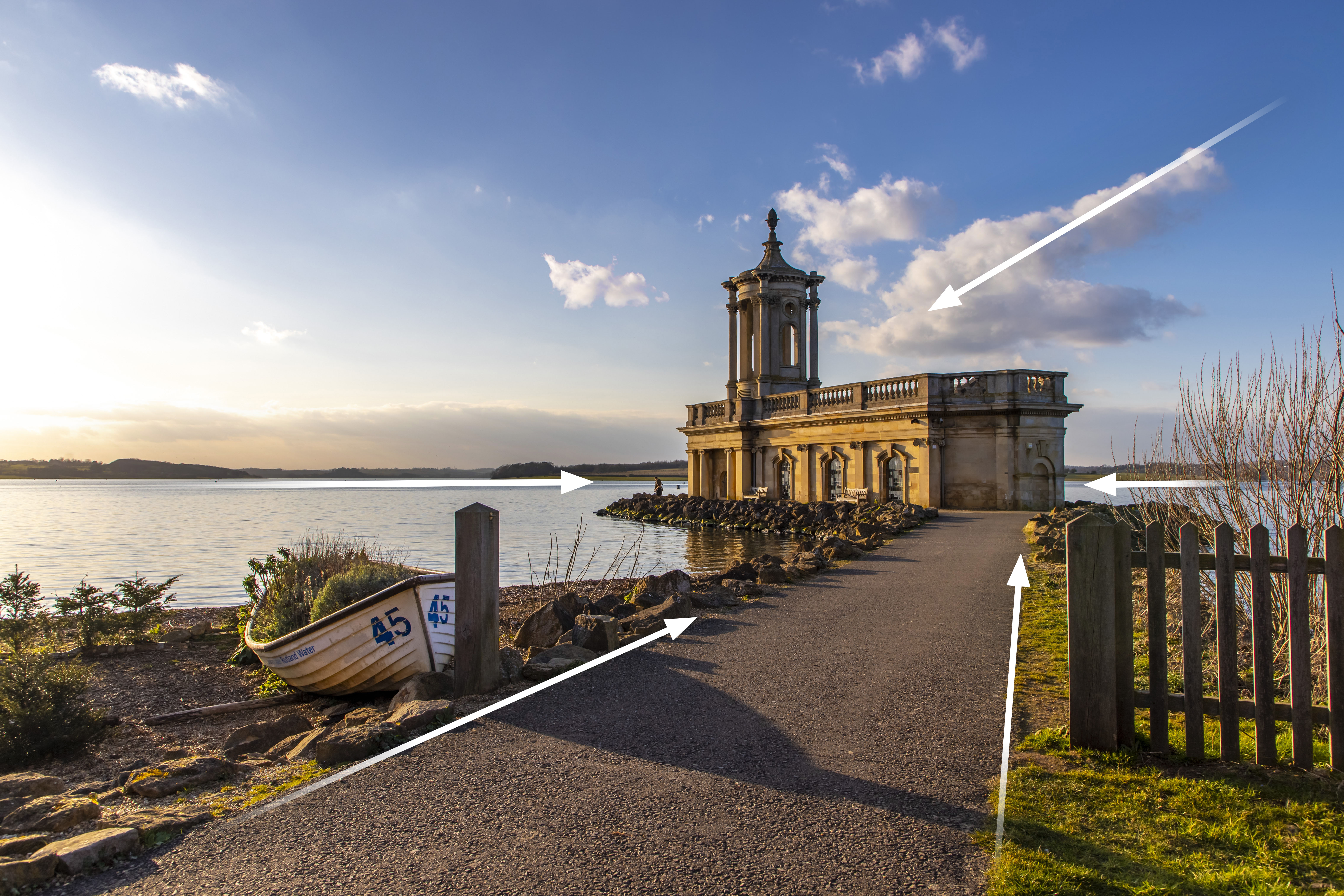
Leading lines are so-called because they literally lead the eye towards your focal point. Without leading lines the viewer’s eye can wander, and it’s unclear what the focal point is. Find and use leading lines in your scene to guide the eye exactly towards the key part of your shot that you want to stand out.
In our shot of Normanton Church here we have several leading lines, from the horizon, the path and even the cloud, all subtly pointing towards the church. Look out for paths, fences, stepping stones and more when you’re out shooting, and try to lead the eye towards the middle of the frame.
02 Make the space in your shot 'active'
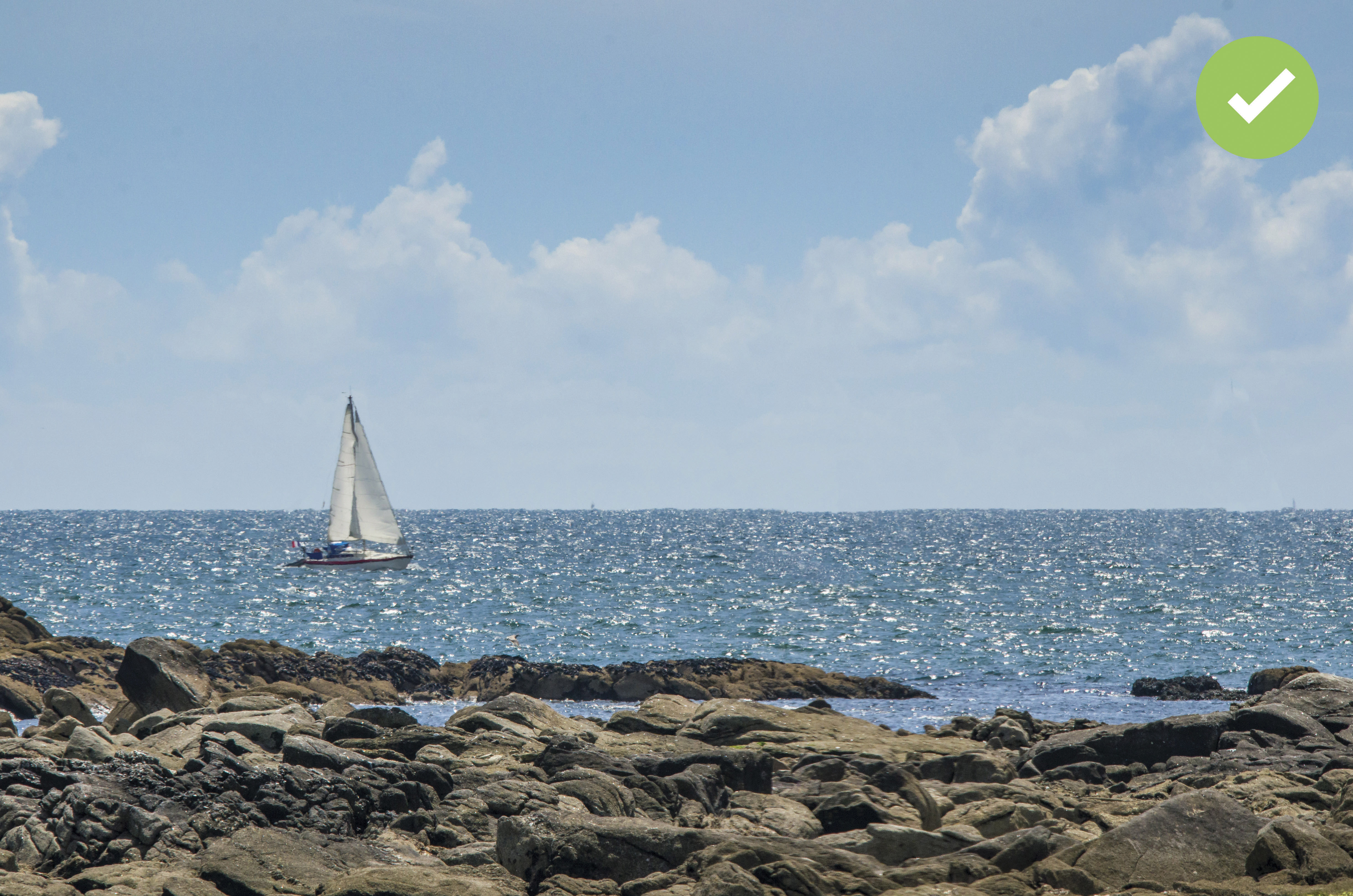
Pay close attention to the direction of the subject in your scene and how close it is to the frame edge; cleverly recomposing can make the space around your focal point more ‘active,’ making the image work harder and more eye-catching. Make sure that your subject, like our boat here, is facing towards the rest of the scene, as this creates ‘active’ space in front of it.
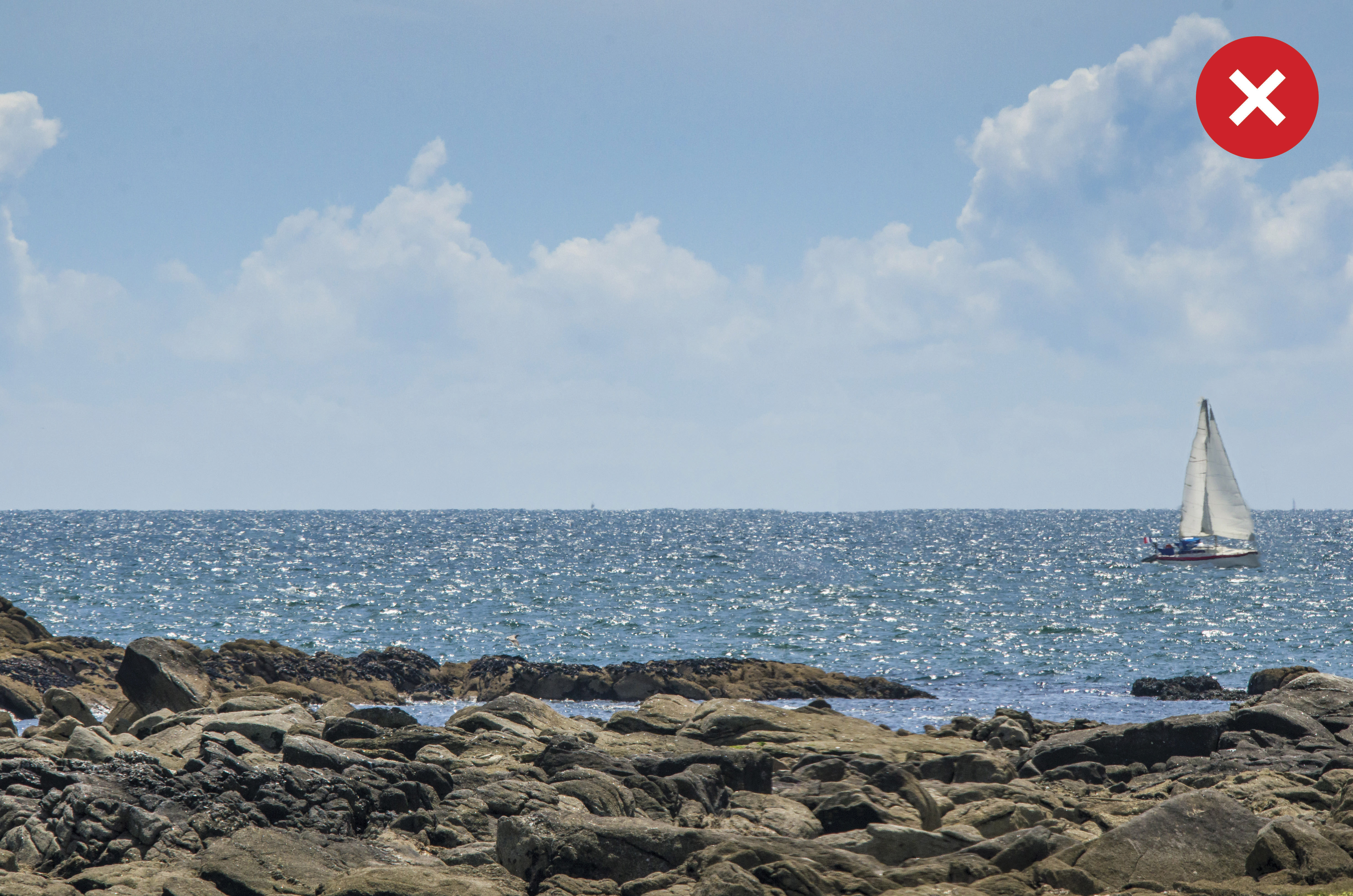
In our 'dead space' example, you can see that the boat is positioned close to the edge of the frame on the right – and it's also facing in that direction, too, making it look as if there’s no space to move into. This means that the space behind the boat is 'dead' space, and this composition doesn't work as well as the shot where the boat is facing towards the 'active' space, as this gives it room to move into and creates a better composition.
03 Turn on the 3x3 grid
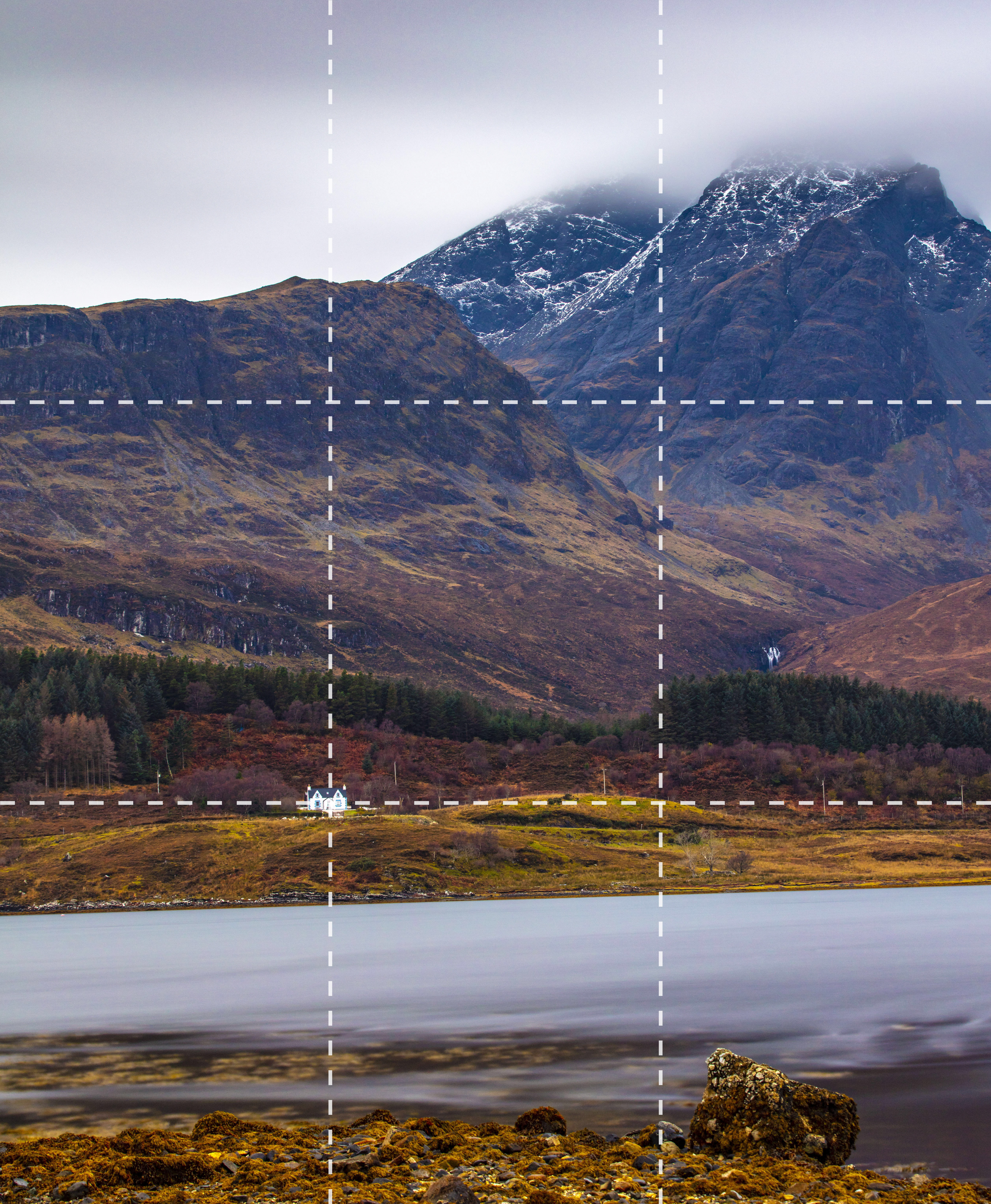
On many cameras you can switch on a grid display and place a 3x3 grid over your image when using the electronic viewfinder or live view, so you can easily compose using the rule of thirds in real time. This is where you divide your frame up into nine equal boxes and position the horizon on one of these lines, or your focal point (like our house here) on an intersection between a horizontal and vertical line. This is fully explained in our video below.
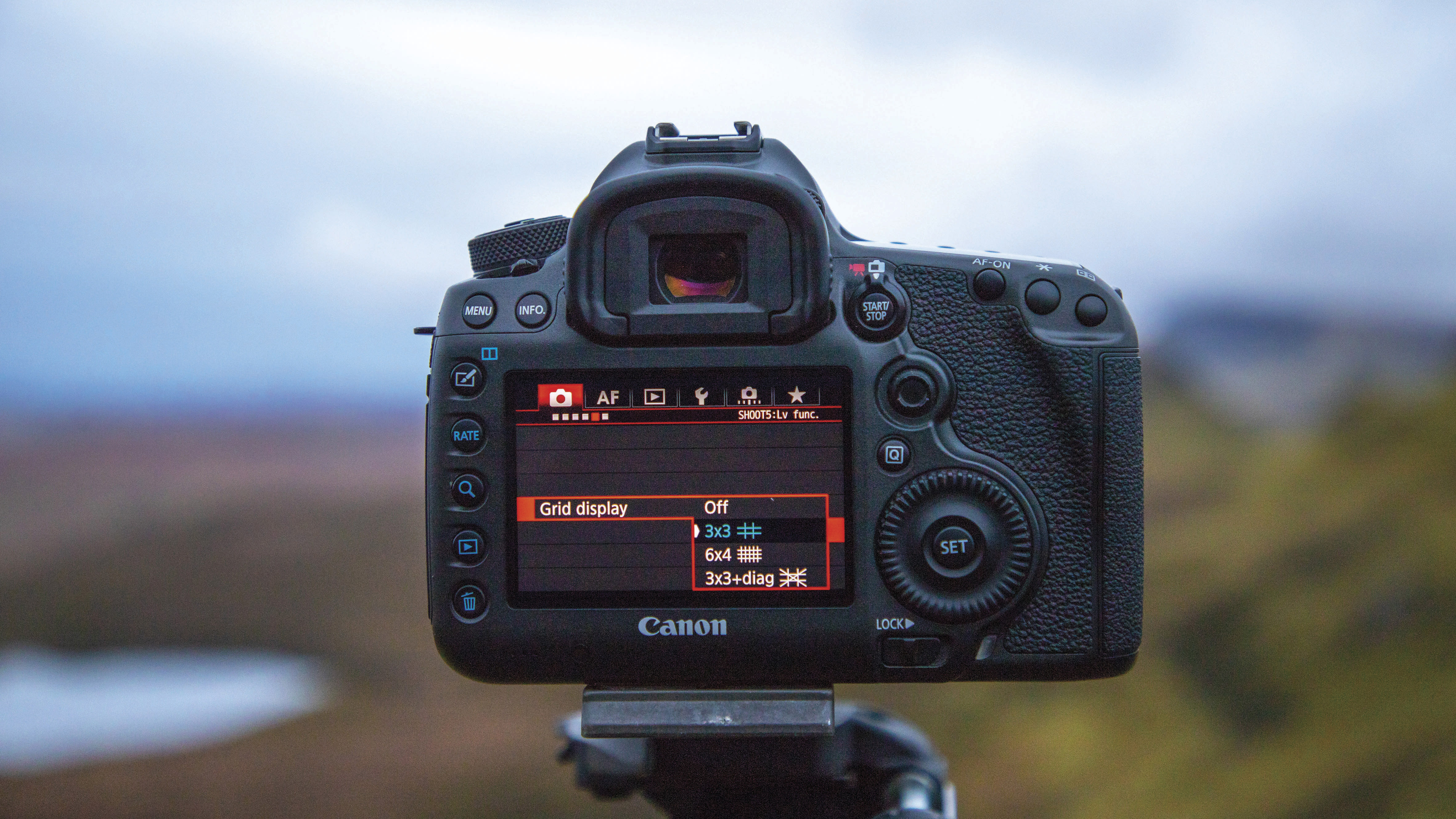
The rule of thirds is a brilliant compositional tool for landscapes that works well in both portrait and landscape orientations and lets you play it safe. But be sure to break the rules occasionally, as sometimes the best composition is at a quirky angle, or with your focal point in the middle of the frame – you decide!
04 Include foreground in the frame
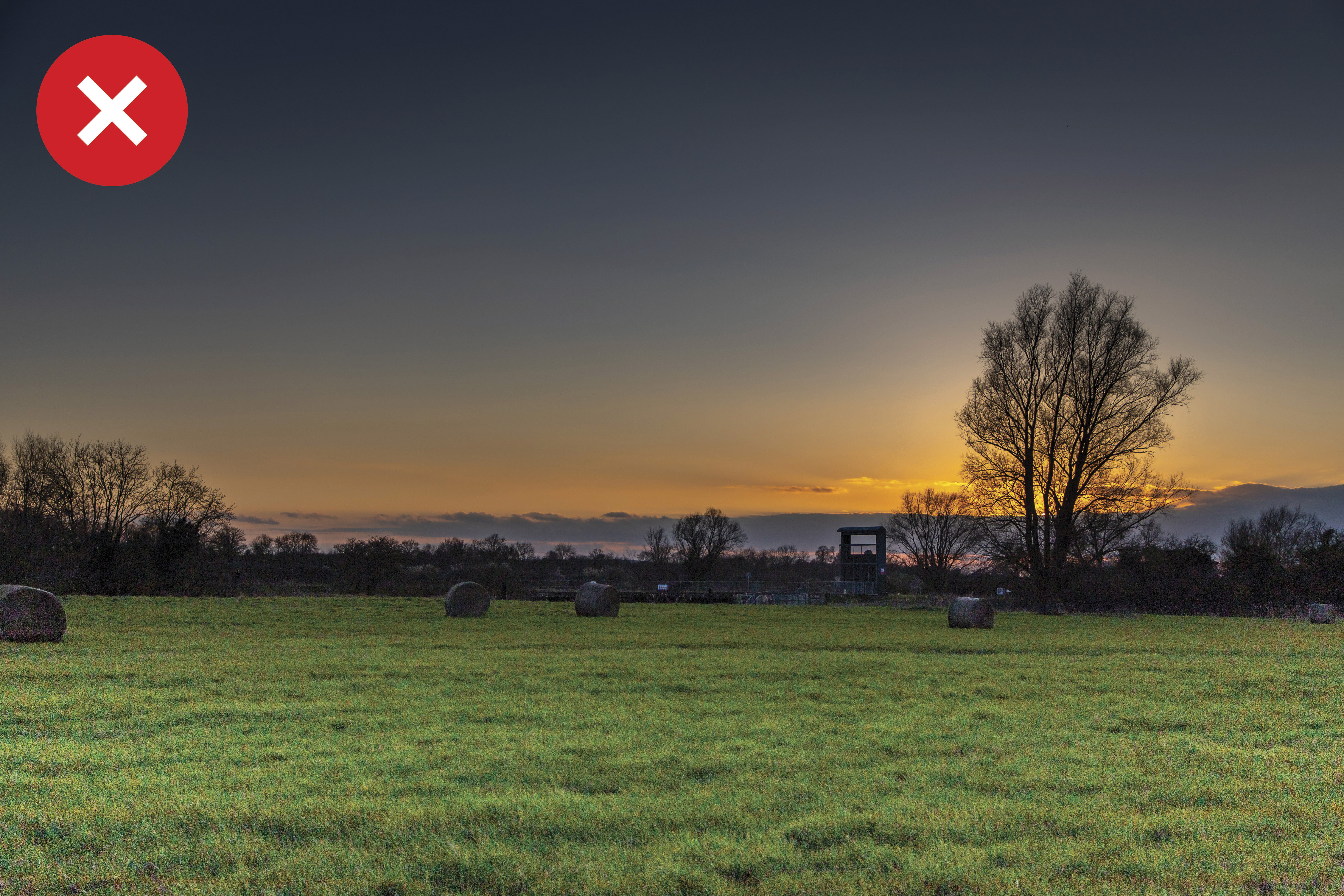
As a general rule of thumb you can improve the composition of your landscapes by including some foreground, mid-ground and background. However, this can be difficult when composing with a telephoto lens that will give you a 'compressed' perspective. For a shot taken with standard and wide-angle lenses, though, some foreground – like our bail of hay – can really help cement the bottom third of the picture and increase the overall depth in the image.
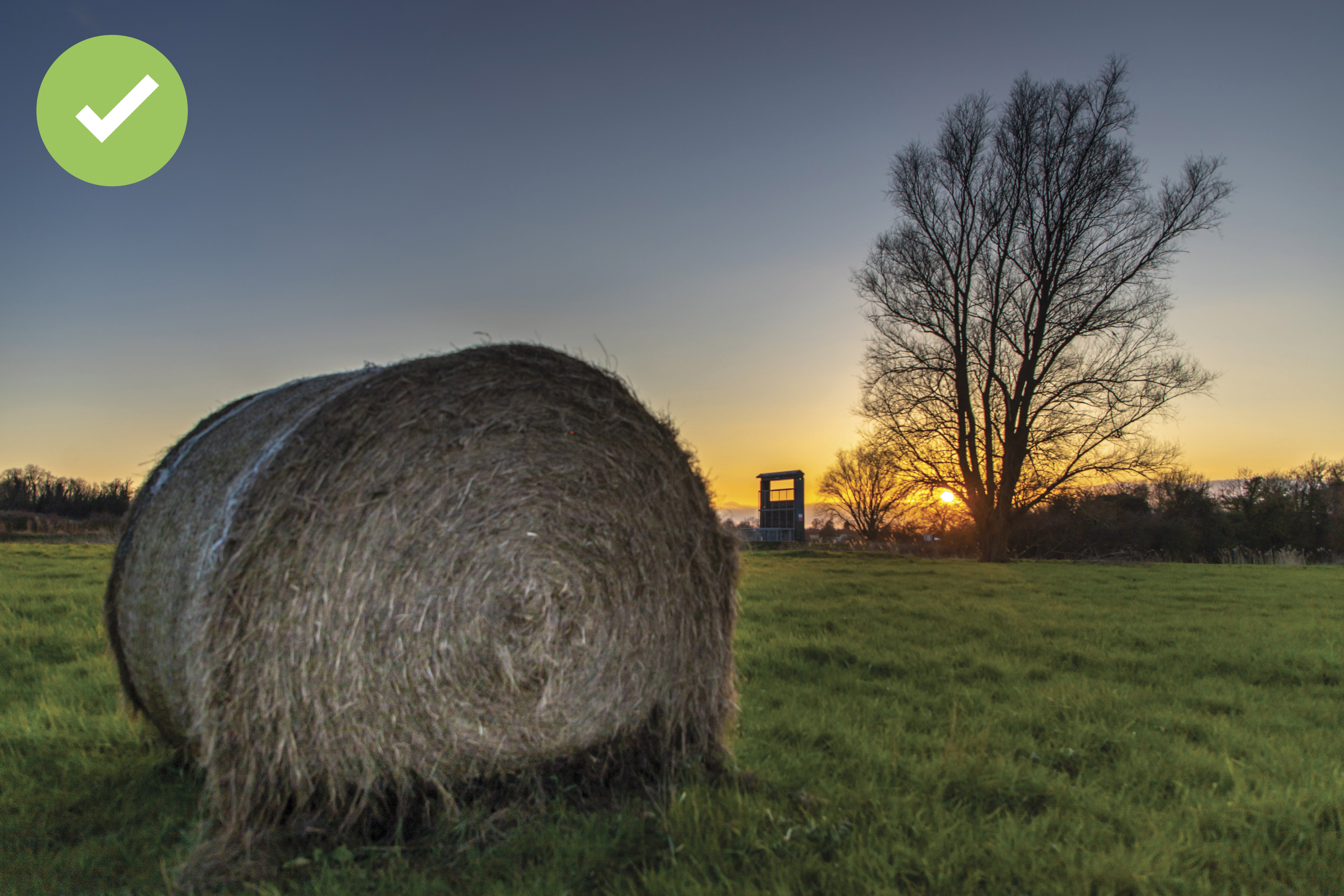
Be sure to focus about a third of the way into the scene with a medium to high aperture of f/11-16 for decent depth of field, as this will help you to get everything sharp from the foreground all the way to the clouds in the background.
PhotoPlus: The Canon Magazine is the world's only monthly newsstand title that's 100% devoted to Canon, so you can be sure the magazine is completely relevant to your system.
Read more:
Landscape photography tips
Best cameras for landscape photography
Best lenses for landscape photography
Best wide-angle lenses
How to shoot landscapes with a telephoto lens
Get the Digital Camera World Newsletter
The best camera deals, reviews, product advice, and unmissable photography news, direct to your inbox!

Deputy Editor on PhotoPlus: The Canon Magazine, Dan also brings his technical wizardry and editing skills to Digital Camera World. He has been writing about all aspects of photography for over 10 years, having previously served as technical writer and technical editor for Practical Photography magazine, as well as Photoshop editor on Digital Photo.
Dan is an Adobe-certified Photoshop guru, making him officially a beast at post-processing – so he’s the perfect person to share tips and tricks both in-camera and in post. Able to shoot all genres, Dan provides news, techniques and tutorials on everything from portraits and landscapes to macro and wildlife, helping photographers get the most out of their cameras, lenses, filters, lighting, tripods, and, of course, editing software.

